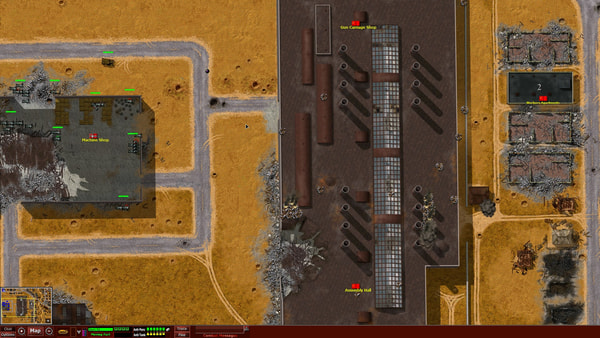
To spice things up a bit, developers Atomic Games have added a role-playing flavour where you are put in command of a special forces unit which moves from battle to battle. On the other hand, if surveying the territory, considering your options and then laying down some suppressing mortar fire while infantry dash out of a ditch to ambush an opponent sends you into raptures, then this is just the toy for you. Close Combat action doesn't come anywhere near the hectic pace of Cavedog's game, and requires a liberal amount of thinking, rethinking, sneaking about, holding position and scurrying between trees. It should be made clear at this juncture that those of you looking for a Total Annihilation-stye blast should apply elsewhere.

The game also incorporates its own editor which enables you to redefine the various settings, parameters and objectives of existing scenarios, which should keep strategy buffs satisfied for the next 100 years. You get to play as either side, starting off with small-scale individual battles and then moving to operations, to campaigns, and finally on to the Big Kahuna-the Grand Campaign. Prelude To WarĬlose Combat III is set on the Eastern Front in World War II and outlines four years of punishing conflict between the Ruskies and the Germans, from the 194I invasion of the USSR through to the tall of Berlin. So there are no surprises when you step into your first scenario and hear beleaguered troops pleading to be allowed home. Those of you who are familiar with the two earlier Close Combat titles will know them as true-to-life interpretations of Commands, Conquer, mould-breaking realtime strategy games that won praise from wargamers who wanted to do away with turns but found Westwood's interpretations just a little bit anaesthetised.
#CLOSE COMBAT 3 SERIES#
That's not to say that Microsoft's long-established strategy series has suddenly become obsessed with Spielbergian realism. Land mines don't just go 'dink' and remove one of your blips from the map, they go "WAHBooooM" and are followed by muffled cries for an ambulance.

Today, fashion dictates that Close Combat III: The Russian Front be filled with panic-stricken servicemen, blood-curdling shrieks, ruptured skulls, and bones poking through flesh. Nobody questioned their orders, and everyone was happy to leap suicidally in front of an enemy machine-gun at the click of a mouse. Brightly coloured tanks and soldiers with accents more phoney than Antoine de Caunes maimed and killed each other for laughs. When Westwood released Red Alert all those years ago, armed conflict seemed like a fun and groovy thing.


 0 kommentar(er)
0 kommentar(er)
